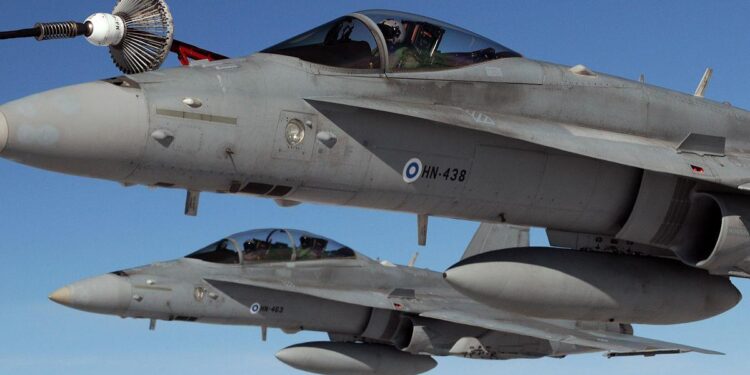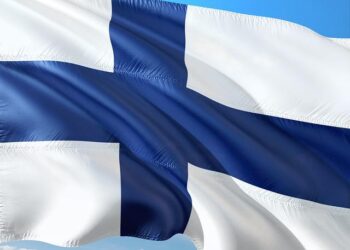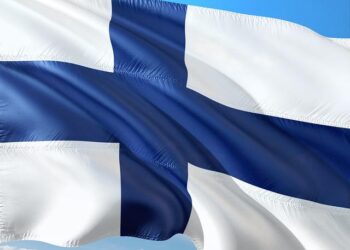In a significant move reflecting evolving historical sensitivities, the Finnish Air Force has announced the discontinuation of the swastika symbol on its official flag. The decision, covered by The Jerusalem Post, marks the end of a controversial chapter for the emblem, which, despite its original association with good fortune in Finnish military history, has become increasingly contentious due to its global recognition as a symbol linked to Nazi Germany. This change underscores Finland’s effort to balance respect for tradition with a clear stance against symbols associated with hate and intolerance.
Finnish Air Force Ends Use of Swastika Symbol Amid Controversy
The Finnish Air Force has officially retired the use of the swastika symbol on its flags and insignia, making a decisive move amid growing international debate over its controversial imagery. Originally adopted in 1918, long before its association with Nazi Germany, the symbol has been part of the air force’s identity for over a century. However, modern sensitivities and external pressures have prompted Finnish defense officials to re-evaluate its continued presence, emphasizing a commitment to respect and inclusivity in today’s global landscape.
The decision has sparked mixed reactions within Finland and abroad. Supporters highlight the symbol’s historic significance unrelated to hate ideology, while critics argue that its removal aligns with a broader effort to distance national institutions from any connotations of extremism. Key points of the change include:
- Official Date of Discontinuation: Spring 2024
- Replacement Emblem: A new stylized eagle design
- Implementation: Gradual phase-out across all military paraphernalia
- Public Response: Nationwide discussions and educational campaigns planned
| Aspect | Previous Symbol | New Symbol |
|---|---|---|
| Design | Blue swastika on white background | Silver eagle silhouette |
| Historical Origin | Finnish Air Force emblem since 1918 | Modern interpretation reflecting national heritage |
| Symbolism | Luck and prosperity (historical) | Strength and vigilance |
Historical Context and Significance of the Swastika in Finnish Military Emblems
Long before the symbol became globally associated with the atrocities of World War II, the swastika held a vastly different meaning for the Finnish military. It was first adopted in 1918 by the Finnish Air Force, inspired by the personal emblem of Count Eric von Rosen, whose aircraft bore a blue swastika as a good luck charm. This emblem quickly evolved into a national military symbol, embodying fortune, strength, and air superiority, distinct from the negative connotations that would later overshadow it. The symbol was prominently featured on aircraft, uniforms, and flags for decades, becoming an integral part of Finland’s military heritage and identity.
Key Elements of the Finnish Swastika Symbol:
- Originated as a symbol of luck from a personal emblem
- Predated Nazi use by several years
- Served as a representation of the Finnish Air Force’s valor and protection
- Embedded in military insignias and flags from 1918 until recent decades
| Year | Significance | Usage |
|---|---|---|
| 1918 | First adoption in Finnish Air Force | Aircraft emblems, flags |
| 1930s | Widespread use despite global shifts in perception | Military uniforms, insignia |
| 2024 | Discontinuation of symbol on official flags | Modern military branding |
Expert Recommendations for Navigating Symbolic Change in National Military Traditions
In reconsidering deeply rooted emblems, experts emphasize the importance of a balanced approach that respects historical significance while acknowledging contemporary sensibilities. Military traditions often carry symbols intertwined with complex legacies; thus, transparent communication with the public and armed forces personnel ensures that changes are understood as a step toward inclusivity rather than erasure. Furthermore, specialists advocate for a process that involves stakeholder engagement across societal sectors, fostering unity during this transition.
To support effective navigation of such symbolic transformations, analysts outline several strategic measures:
- Contextualizing History: Providing educational campaigns that detail the origins and evolution of symbols removed or altered.
- Incremental Change: Gradually phasing out controversial emblems to allow adaptation over time.
- Official Documentation: Updating military manuals and insignia registries to reflect new standards.
- Memorial Preservation: Creating dedicated spaces or exhibits that honor the past without endorsing outdated iconography.
| Recommendation | Purpose | Example |
|---|---|---|
| Educational Outreach | Enhance public understanding | Documentaries, Exhibitions |
| Gradual Implementation | Minimize resistance | Phased uniform updates |
| Stakeholder Dialogue | Ensure inclusivity | Community forums, surveys |
In Conclusion
The decision by the Finnish Air Force to discontinue the use of the swastika symbol on its flag marks a significant shift in the military’s visual identity, reflecting broader efforts to distance itself from symbols with controversial associations. While the swastika has a complex history in Finland dating back to its use prior to World War II, the move aligns with contemporary sensitivities and international norms. As Finland continues to modernize its defense forces, this change underscores a commitment to both honoring tradition and embracing a more inclusive future.
















